NYC’s Forgotten ‘War on Christmas Trees’
Discover how an obscure holiday crackdown affects festive street vendors today!


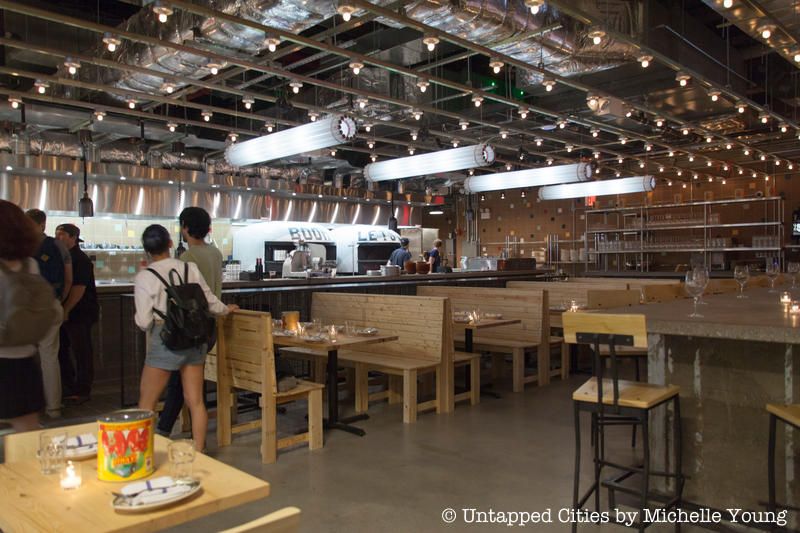
Interior of Dekalb Market
New York City is known for its food innovations and the vast amount of people who work there everyday. Due to the huge demand for fine dining in high traffic areas, a number of high-end food courts were created to provide visitors with more variety than just a typical, lunchbox ham sandwich. Most people think of malls when they hear the word “food court,” but New Yorkers have places like the new Dekalb Market, City Kitchen, and other locations to choose from.
With the hustle and bustle of urban life, New Yorkers have come to expect these kinds of upscale food courts, which represent a plethora of cultures and offer the perfect combination of convenience and taste.
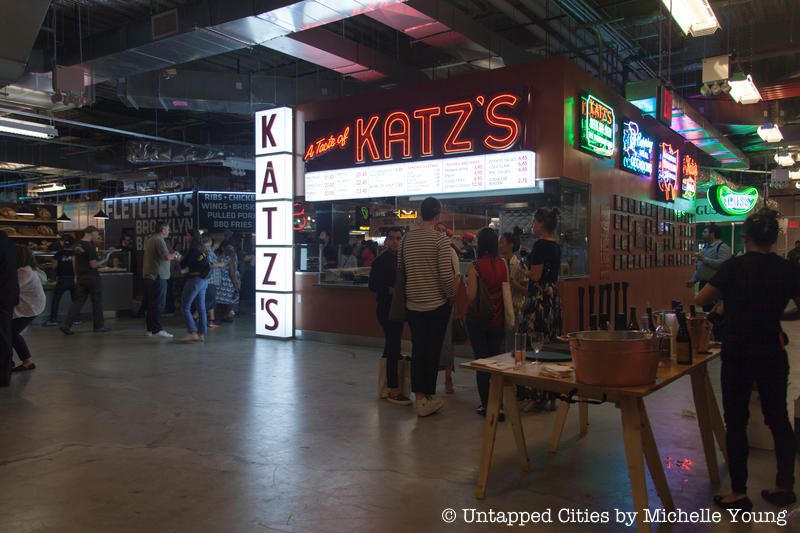
Opened on June 16th in City Point in Downtown Brooklyn, the new DeKalb Market replaced the one of the same name that operated out of salvaged shipping containers since 2011. The new market is indoors and features the first branch-off outpost of the Lower East Side’s Katz’s Delicatessen, which is a popular New York City staple, featured in When Harry Met Sally.
The market includes several Brooklyn-based vendors like Steve’s Key Lime Pie, Ample Hills Ice Cream, and Brooklyn Juicer. Instead of aiming for a carbon cut look, DeKalb Market lets each vendor establish their own aesthetic which creates a nice mish-mash of styles and colors. Like the appearance, the food offered in the court varies from foreign food to New York staples like bagels and delis.
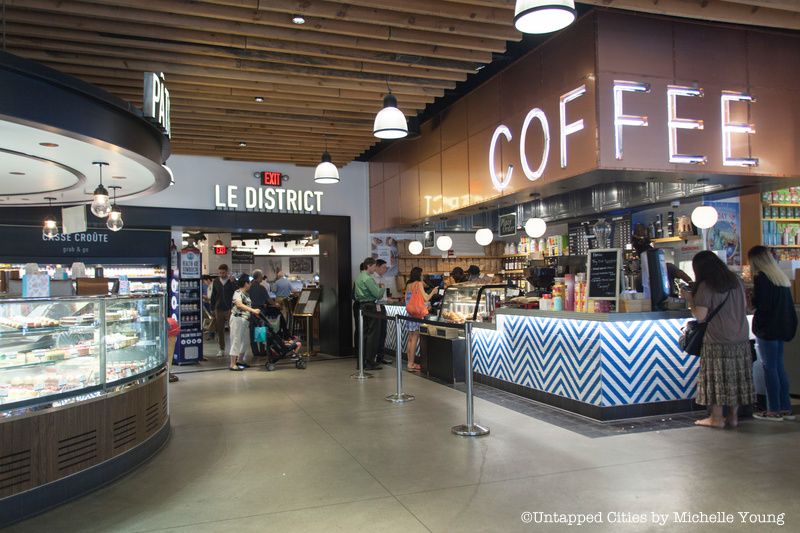
If you’re ever in the heart of the financial district and start craving French cuisine, Le District in Brookfield Place is the place to go. The market’s setup makes it unique, as it consists of three food “districts,” four vibrant restaurants, and a fresh grocery curated by the food court’s skilled taste-makers.
The upscale “Market District” is organized into “speciality stations” that present opportunities for both dining and retail. It offers a wide selection of cheese, meats, hors d’oeuvres, grilled entrees, and delectable desserts. You can also hand select your own cut or filet from the butcher or fish monger and have it prepared.
After your meal, head over to the “Cafe District” for coffee, pastries, crepes, chocolates, and other French sweets. This district has two eateries: “Coffee & Patisserie” and “La Cure Gourmande.” Between these two options, you’re sure to satisfy your dessert cravings. Finally, if you’re there for groceries, the “Garden District” has you covered. Here, you’ll find a florist, fresh produce, everyday essentials, delightful delicacies, and seasonal fare. If you also want a meal, this district also has a salad bar and pour over coffee.
While the different districts are fun to browse and navigate, if you want something more straightforward, Le District also has four restaurants serving both casual meals and higher-end cocktails. Your options include the Michelin-star restaurant “L’Appart,” as well as “Beaubourg,” which prides itself in serving food that is both French and “New New York.”
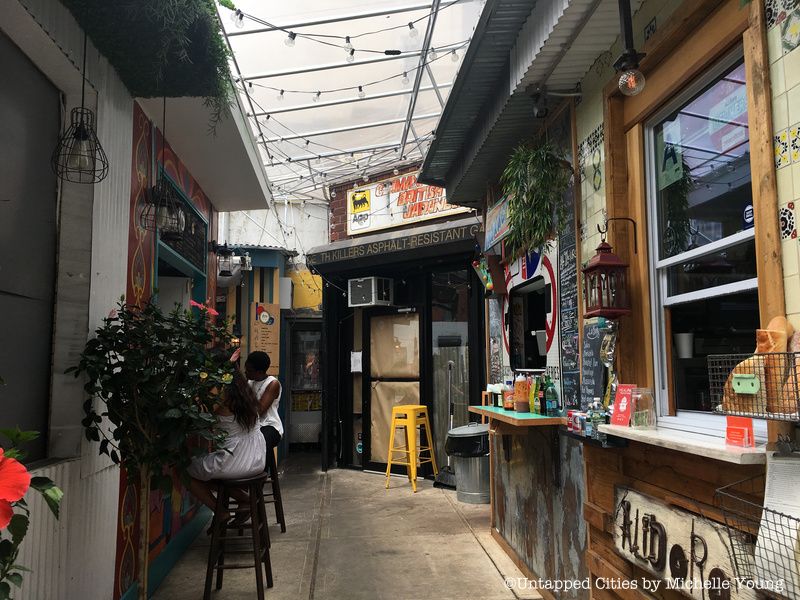
With all the popular restaurant options that New York City has to offer, it’s easy to miss the tiny, open-air food market sitting on the corner site of a former auto-mechanic shop at 348 Bowery. But we promise that this food court of sorts, called The Bowery Market, is worth visiting, both for its delectable food options and irreplaceably quaint atmosphere. This makes it an ideal spot for finding food without hassle while still having just the right amount of options to satisfy any craving.
One restaurant at the Bowery Market is “Alidoro,” an Italian speciality sandwich shop serving sandwiches and salads. If you’re in the mood for Mexican cuisine, walk a few feet over to Oaxaca Comida Calle for tacos, quesadillas, and guac. There’s also Indian food at “Parantha Alley,” sushi at “Sushi on Jones,” vegetarian food at “The Butcher’s Daughter,” and coffee Champion Coffee. The beauty of it is that these diverse options are concentrated in one small space.
Cuisine aside, the Bowery Food Market is simply delightful because of its quirky location and setup alone. The market is uniquely designed with narrow, cozy passageways, homey ceiling lights, and clear ceilings that allow the sunlight to pour in as you eat or browse your options.
See more of our photos here.
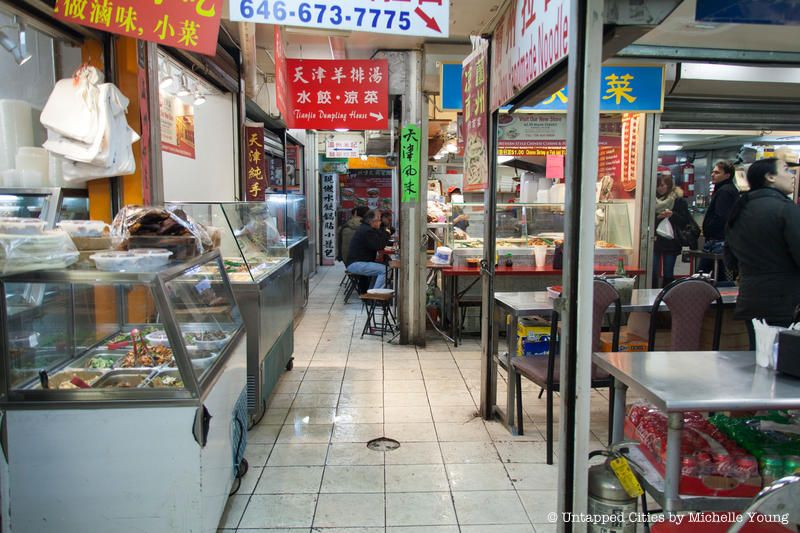
If you don’t know exactly what you’re looking for, you’ll likely miss the entranceway to the Golden Mall. The Golden Shopping Mall, a street-level food court, sits directly above the Golden Mall, and for our purposes is not where you want to be. Its storefront real estate dwarfs the small portal into this underground society of traditional food. You’ll want to look for the entrance pictured above, which will take you down a steep set of aging stairs into the basement, where a culinary world you’ve never seen the likes of before awaits.
Germaphobes and neat freaks be warned: the entrepreneurs in the Golden Mall are all about food, not presentation. The basement is literally packed with tiny food vendors, and its hallways are undeniably dirty, cramped and claustrophobic. “Grade Pending” signs dotting the walls are the icing on the “does the New York Health Department know about this place?” cake. I urge you, however, to overlook what you see, and instead embrace what you taste. After all, locals and world-renowned chefs eat here all the time, and don’t seem to mind at all.
See our photographic journey of the Golden Mall here.

Photo by Sharon Medina-Chavez via Queens International Night Market
After grabbing a bite to eat at the Golden Mall, take a short trip over to The Queens International Night Market, located behind the New York Hall of Science in Flushing Meadows-Corona Park. The open-air and family-friendly market features up to 100 independent vendors who not only sell food, but art and merchandise. In addition, you can frequently catch live performances taking place.
As Queens is celebrated for its diversity, the night market is a must-visit for those looking to sample a wide array of culinary treats from “Sichuan Naan-wiches” to “Seoul Food.” It takes place every Saturday this year from April 22nd to August 19th and then September 30th to October 28th.
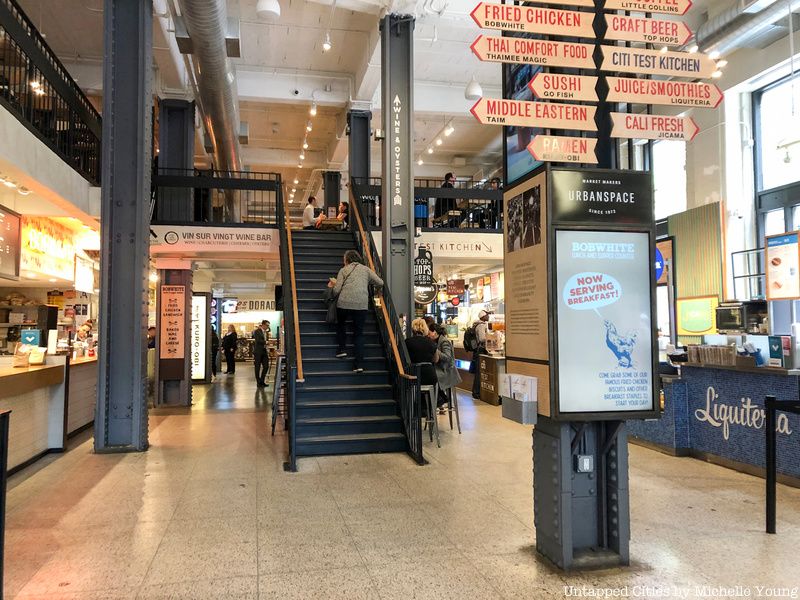
Opened in 2011 in Midtown Manhattan right near Grand Central Terminal, Urbanspace Vanderbilt is the perfect location for those who want to try some alternative options other than what Grand Central’s food court provides. It offers 20 “artisanal and chef-driven food concepts,” ranging from Chinese cuisine like Mr. Bing to customizable sandwiches at Mayhem & Stout.
Another new food court of the same name will be popping up a few blocks away at 570 Lexington Ave., replacing the Pecking Duck that previously occupied the space. The staggering rent for the massive 11,400 square-foot lease totals 1.5 million a year. At this time, the opening date is unknown.
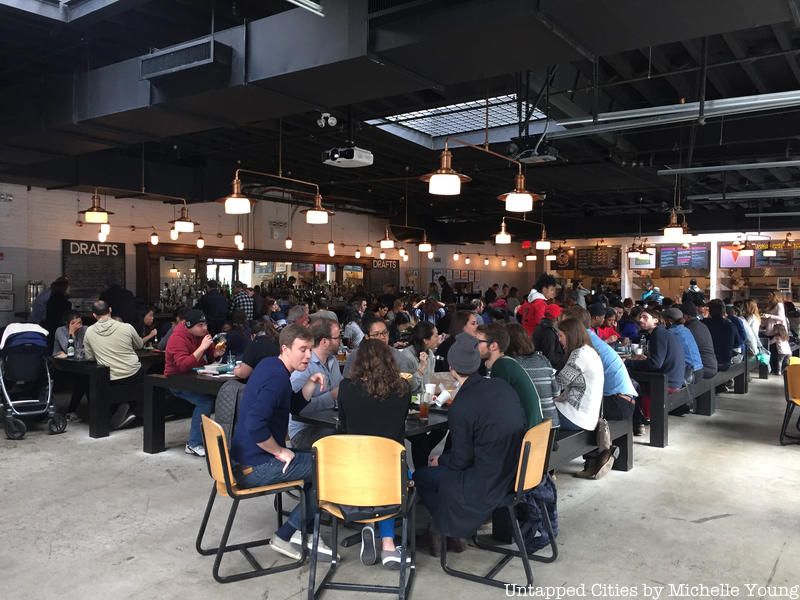
A product of Smorgasbord, Berg’n, a beer garden and food court, opened in 2011 in Crown Heights. The interior of the Berg’n looks like a page out of J. K. Rowling’s Harry Potter series, and features long tables stacked in rows like The Great Hall. The outside eating area also has a plethora of small tables and chairs. The Berg’n faced a bit of social media backlash when the owners failed to meet their original opening date, but the establishment has done very well and remains a popular eating destination.
Set inside an industrial space, the Berg’n houses Mighty Quinn’s, Landhaus, Lumpia Shack, and Dub pies in addition to a wall of tap beers. The Beg’n is a unique food court concept that can be enjoyed all year long.

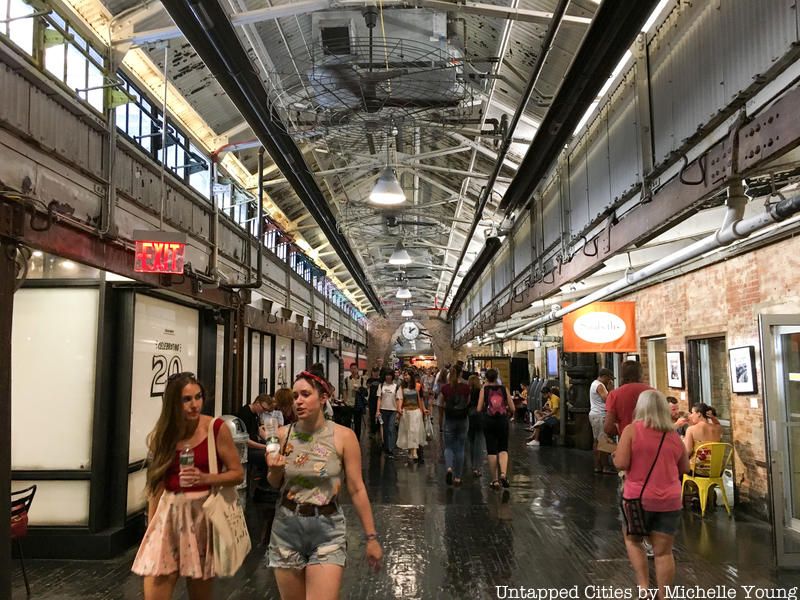
Located near the Meatpacking District in Manhattan, the Chelsea Market is one of the most famous and sought out food markets in New York City, attracting over 6 million visitors every year. The market has a whopping 35 vendors serving food that ranged from cheesecakes to nuts to pasta and tacos.
The area’s history with food dates back to the time of the Algonquin Native Americans who “traded their game on the banks of the Hudson River” at the same spot. The building used to be the location of the National Biscuit Company factory, more commonly referred to as Nabisco, and the remnants of this time can still be seen as murals and Nabisco memorabilia are displayed within the food court.
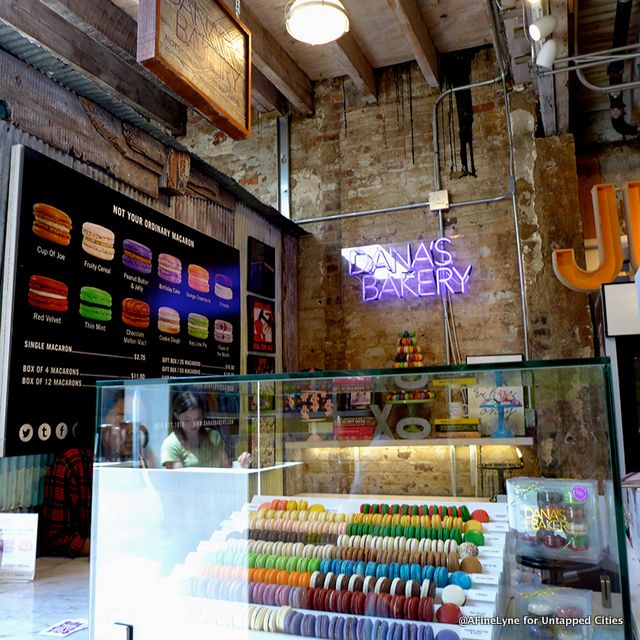
Gansevoort Market, located on 14th Street, has a rich and storied history dating back to 1884. The original market was named after Peter Gansevoort, who was a Revolutionary War figure. It served as the first open-air market where patrons could buy and sell produce at the Fort Gansevoort location. Similar to the popular markets today, in 1884, a patron noted that “During the dark hours of early morning, as hundreds of wagons of all descriptions converge upon the market, pandemonium reigns as traffic chokes the thoroughfares for blocks around.” That sounds eerily familiar to current New York City whenever a new food trend is created.
The current market has an industrial aesthetic that ties together the past and present versions of the market while still creating a modern feel. Popular vendors at the market include Hold my Knots, Mission Ceviche, and Burger, Inc.
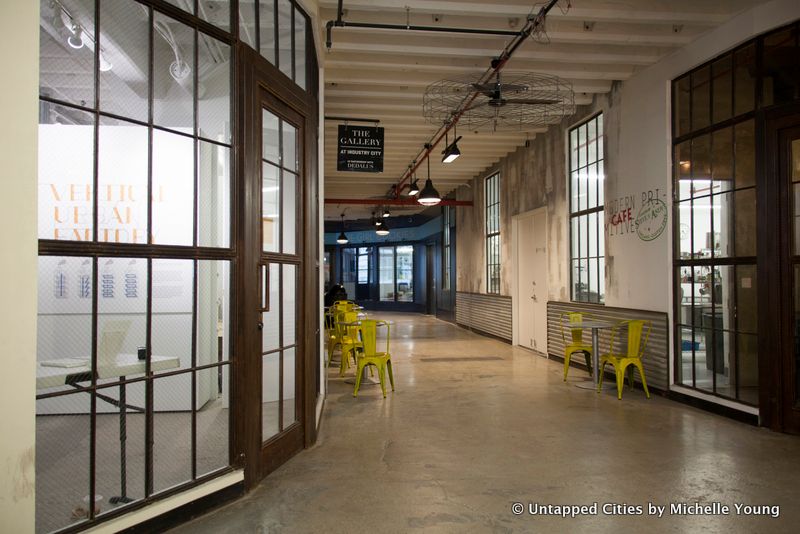
Industry City, the cluster of buildings in Sunset Park, is home to numerous eateries. Despite CEO Andrew Kimball’s insistence that it not be called a food court, the location is filled with hallways of food establishments like Blue Marble Ice Cream, Colson Patisserie, and the virally popular Avocadaria, which actually debuted in Industry City.
The major revamp of Industry City began in 2014 when an emphasis was placed on food. The goal was to draw in a slew of manufacturing companies to make Industry City their home and the plan was wildly successful.
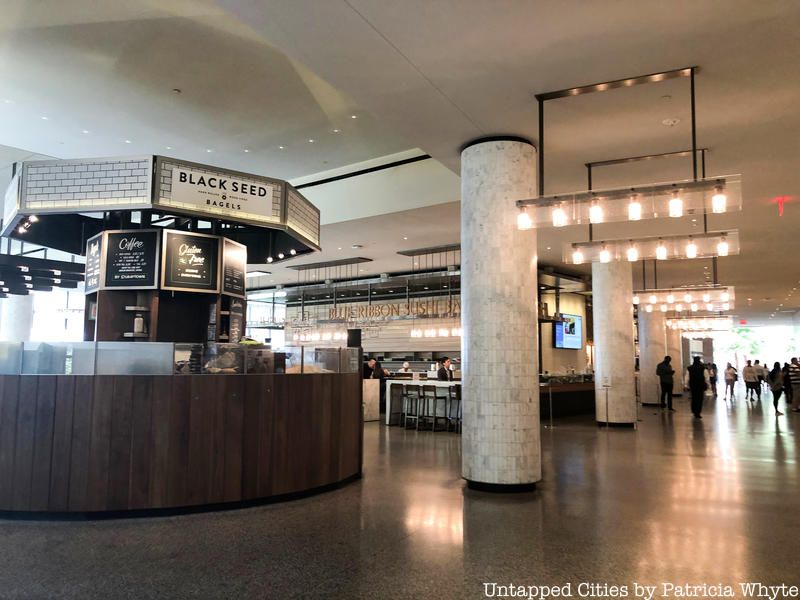
Located in Brookfield Place, Hudson Eats opened in 2014 during a wave of new high-end food courts. The location was chosen to draw in “suit and tie” workers in the surrounding area with multiple options that gear toward that market.
The varied eateries at Hudson Eats include Black Seed Bagel, Blue Ribbon Sushi Bar, Chop’t, and Dos Toros Taqueria. As just the names suggest, the venue includes all kinds of options for breakfast and lunch, and offers a wide variety of healthy choices and internationally inspired dishes.
<em>https://www.youtube.com/watch?v=5NDMVvvr0g8</em>
Located between Times Square and Rockefeller Center, City Kitchen caters to New York City workers and tourists alike, and provides an easy and varied option for quick, gourmet dining. City Kitchen exists in the hotel, Row NYC, which makes it the perfect destination for tourists who want to feast on some of New York City’s viral food trends.
It’s home to food vendors such as Dough, Whitmans New York, Azuki, and ilili BOX. From offerings like sushi, doughnuts, burgers, pretzels, and lobster rolls, City Kitchen has something for everyone, bringing eateries from all areas of the city into the bustling center of Times Square.
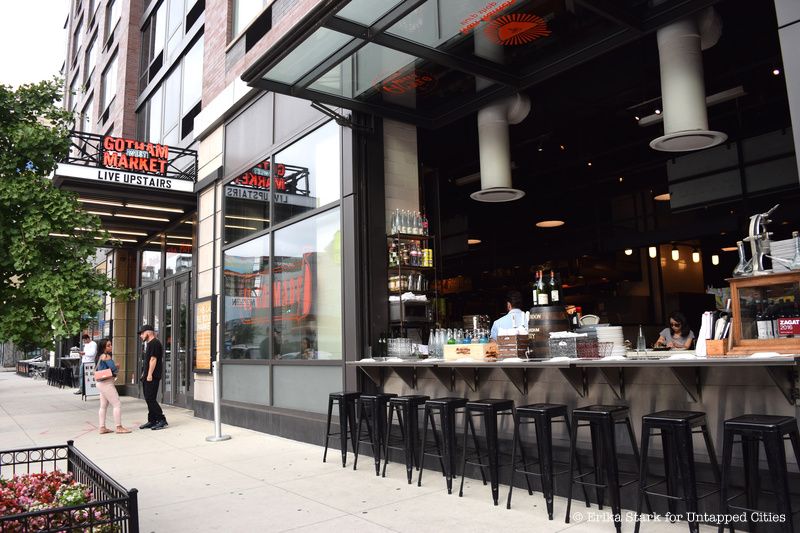
Gotham West Market, located on 11th Avenue in Hell’s Kitchen, is one of New York City’s most talked about food courts. In an area that had previously lacked a lot of food options, the location was chosen to draw people into moving to Gotham West. The market, while not the first of its kind in the city, sparked the trend that led to the high amount of fancy food courts that have since been built.
From cured meats, sushi, ramen, and innovative sandwiches, the Gotham West Market offers a wide variety of food all served up with its Hell’s Kitchen charm. There’s a sign outside of the market that reads, “You are what you eat so make it good” and vendors and patrons alike follow that advice daily.
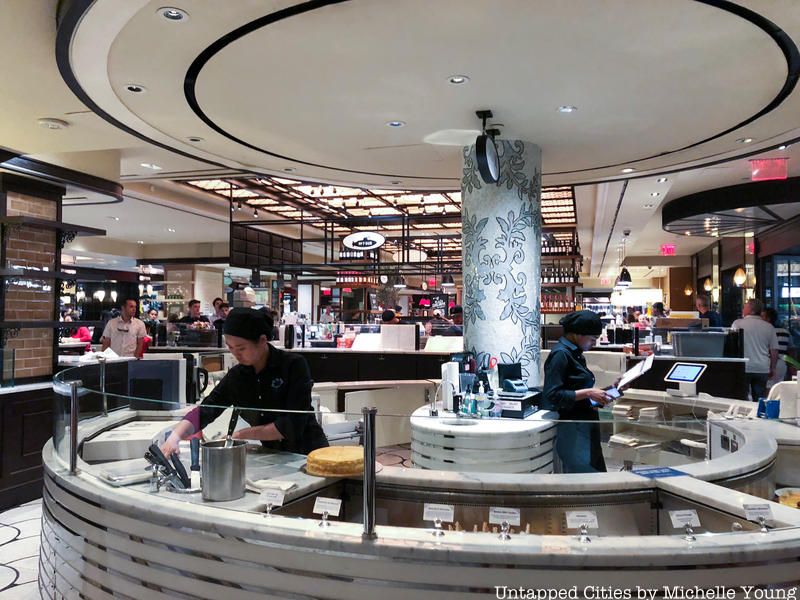
Hotels, especially large ones, are the perfect location for food courts as they are usually located in dense work areas with a lot of foot traffic. The Plaza Hotel, located on Fifth Avenue, is home to not one, but two high-end food courts.
The Plaza Food Hall opened in the luxury shopping area in the basement of the Plaza Hotel in 2010. The shopping center was built in 2008 during the financial crisis and the food hall helped boost the business for the struggling underground shops. Today, it has over a dozen vendors selling pizza, seafood, baked goods and sandwiches, drawing in a lot of customers who stop by to shop and eat.
For a little bit of food court inception, the Plaza Food Hall is also home to yet another food hall: The Todd English Food Hall, designed by Jeffery Beers. Inspired by European cuisine, it features nine food stations, including highlights like the Cheese and Charcuterie station, the Ocean Grill and Oyster Bar, Taqueria, and the Wine Bar and Patisserie.
Next, check out 10 Must-Visit African Restaurants in NYC and Photos Inside the DeKalb Market Hall. Check out the author @litbyliterature.
Subscribe to our newsletter